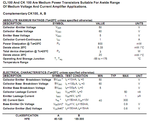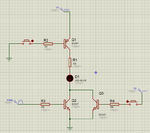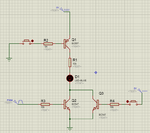KlausST
Advanced Member level 7

Hi,
These are somehow "ideal" values.
Read your microcontroller´s datasheet.
Maybe you find int the "Absolute maximum Ratings" something like this:
"DC Current per I/O Pin ............................................... 40.0 mA"
Then you can´t draw 60mA from any pin.
And if it can source 60mA, then you should look into "IO pin voltage current chart"
Maybe it looks like this:

Then find the 60mA horizontal line and find out that the output voltage may be 3.2V only. (not 5V)
*****
--> I recommend to use a MOSFET instead of the bjt.
Klaus
MCU pin voltage is 5V, Vbe = 0.7V, Ib = 60 mA
These are somehow "ideal" values.
Read your microcontroller´s datasheet.
Maybe you find int the "Absolute maximum Ratings" something like this:
"DC Current per I/O Pin ............................................... 40.0 mA"
Then you can´t draw 60mA from any pin.
And if it can source 60mA, then you should look into "IO pin voltage current chart"
Maybe it looks like this:

Then find the 60mA horizontal line and find out that the output voltage may be 3.2V only. (not 5V)
*****
--> I recommend to use a MOSFET instead of the bjt.
Klaus





